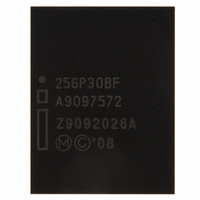RC28F256P30BFA NUMONYX, RC28F256P30BFA Datasheet - Page 35

RC28F256P30BFA
Manufacturer Part Number
RC28F256P30BFA
Description
IC FLASH 256MBIT 100NS 64EZBGA
Manufacturer
NUMONYX
Series
Axcell™r
Datasheet
1.PF48F4000P0ZBQEF.pdf
(94 pages)
Specifications of RC28F256P30BFA
Format - Memory
FLASH
Memory Type
FLASH
Memory Size
256M (16Mx16)
Speed
100ns
Interface
Parallel
Voltage - Supply
1.7 V ~ 2 V
Operating Temperature
-40°C ~ 85°C
Package / Case
64-EZBGA
Lead Free Status / RoHS Status
Contains lead / RoHS non-compliant
Other names
898885
898885
RC28F256P30BF 898885
898885
RC28F256P30BF 898885
Available stocks
Company
Part Number
Manufacturer
Quantity
Price
Company:
Part Number:
RC28F256P30BFA
Manufacturer:
MICRON
Quantity:
1 000
Company:
Part Number:
RC28F256P30BFA
Manufacturer:
Micron Technology Inc
Quantity:
10 000
P30-65nm
10.0
10.1
10.1.1
10.1.2
10.1.3
10.1.4
Datasheet
35
Security Modes
The device features security modes used to protect the information stored in the flash
memory array. The following sections describe each security mode in detail.
Block Locking
Individual instant block locking is used to protect user code and/or data within the flash
memory array. All blocks power-up in a locked state to protect array data from being
altered during power transitions. Any block can be locked or unlocked with no latency.
Locked blocks cannot be programmed or erased; they can only be read.
Software-controlled security is implemented using the Block Lock and Block Unlock
commands. Hardware-controlled security can be implemented using the Block Lock-
Down command along with asserting WP#. Also, V
inhibit program and erase operations (see
page 31
Lock Block
To lock a block, issue the Block Lock Setup command, followed by the Block Lock
command issued to the desired block’s address. If the Set Read Configuration Register
command is issued after the Block Lock Setup command, the device configures the RCR
instead.
Block lock and unlock operations are not affected by the voltage level on V
lock bits may be modified and/or read even if V
Unlock Block
The Block Unlock command is used to unlock blocks (see
on page
return to a locked state when the device is reset or powered down. If a block is in a
lock-down state, WP# must be deasserted before it can be unlocked (see
“Block Locking State Diagram” on page
Lock-Down Block
A locked or unlocked block can be locked-down by writing the Block Lock-Down
command sequence (see
down state cannot be programmed or erased; they can only be read. However, unlike
locked blocks, their locked state cannot be changed by software commands alone. A
locked-down block can only be unlocked by issuing the Block Unlock command with
WP# deasserted. To return an unlocked block to locked-down state, a Block Lock-Down
command must be issued prior to changing WP# to V
the locked state upon reset or power up the device (see
Diagram” on page
Block Lock Status
The Read Device Identifier command is used to determine a block’s lock status (see
Section 12.0, “Power and Reset Specifications” on page
the addressed block’s lock status; DQ0 is the addressed block’s lock bit, while DQ1 is
the addressed block’s lock-down bit.
21). Unlocked blocks can be read, programmed, and erased. Unlocked blocks
and
Section 9.5, “Erase Protection” on page
36).
Section 6.0, “Command Set” on page
36).
Section 8.6, “Program Protection” on
PP
is at or below V
PP
data security can be used to
34).
IL
. Locked-down blocks revert to
Figure 12, “Block Locking State
48). Data bits DQ[1:0] display
Section 6.0, “Command Set”
21). Blocks in a lock-
PPLK
Order Number: 320002-10
.
Figure 12,
PP
. The block
Mar 2010












